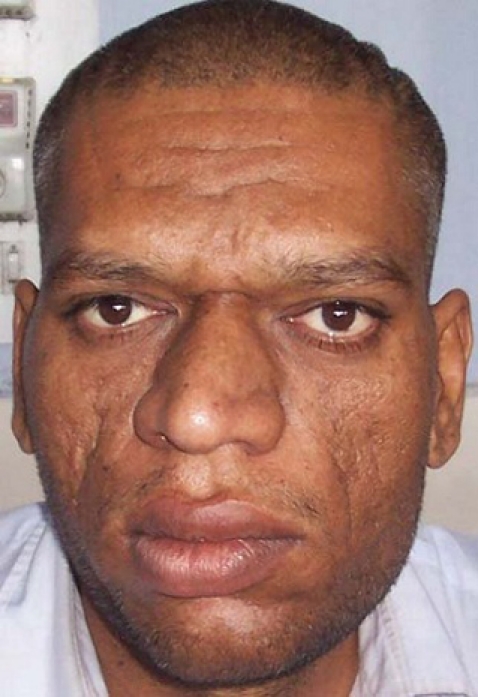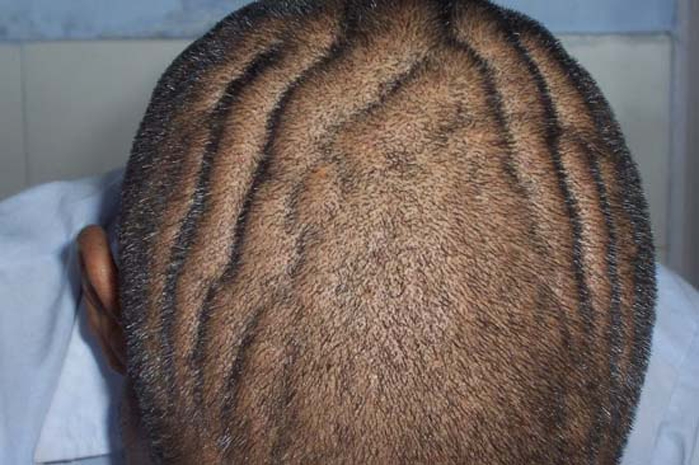Description
A 30-year-old male presented with headache and acral enlargement (figure 1).On examination, he had bitemporal hemianopia, acanthosis nigricans, skin tags and cutis verticis gyrata (CVG) from which he was asymptomatic (figure 2). On investigation, serum growth hormone (GH) after 75 g glucose load was 26.8 ng/ml (N, <1 ng/ml) with insulin-like growth factor 1 (IGF-1) of 1126 ng/ml (N, 117–329 ng/ml). MRI head revealed a pituitary macroadenoma (20 × 15 × 15 mm). The unusual feature in the index case was the presence of CVG.
Figure 1.

Face of the patient showing typical features of acromegaly.
Figure 2.

The scalp showing cutis verticis gyrata.
CVG is a condition associated with excessive soft tissue proliferation with undulations of the scalp mimicking cerebral sulci and gyri.1 The estimated prevalence of CVG is 1 in 100 000 in males 0.026 in 100 000 in females.2 CVG can be classified in two categories: (1) primary (non-essential and essential) and (2) secondary. The primary non-essential form may be associated with mental retardation,cerebral palsy, epilepsy, cataract and blindness while primary essential form is not associated with such abnormalities.2 The causes of secondary CVG include acromegaly, pachydermoperiostosis, psoriasis, chronic pemphigus, myxoedema, intradermal amyloidosis, intradermal cerebriform naevus, congenital melanocytic naevi, naevus lipomatosus, neurofibroma and rarely insulin resistance syndrome. Appropriate investigations including histopathology are required to define the aetiology of CVG. Histological findings include hypertrophy of sebaceous structures with no evidence of collagen thickening. In patients with acromegaly high GH and IGF-1 levels result in generalised excessive soft tissue proliferation manifesting as acral enlargement. Overgrowth of the scalp manifesting as CVG is observed in 10–15% of patients with acromegaly. These undulations develop to accommodate the soft tissue overgrowth over the scalp in a narrow space limited by scalp fascia. CVG due to secondary aetiologies usually regresses; however, sometimes surgical interventions may be required.
Footnotes
Competing interests None.
Patient consent Obtained.
References
- 1.Dumas P, Medard de Chardon V, Balaguer T, et al. [Primary essential cutis verticis gyrata: Case report and literature review]. Ann Chir Plast Esthet 2010;55:243–8 [DOI] [PubMed] [Google Scholar]
- 2.Schenato LK, Gill T, Carvalho LA, et al. Essential primary cutis vertices gyrata. J Pediatr 2002;78:75–80 [DOI] [PubMed] [Google Scholar]


